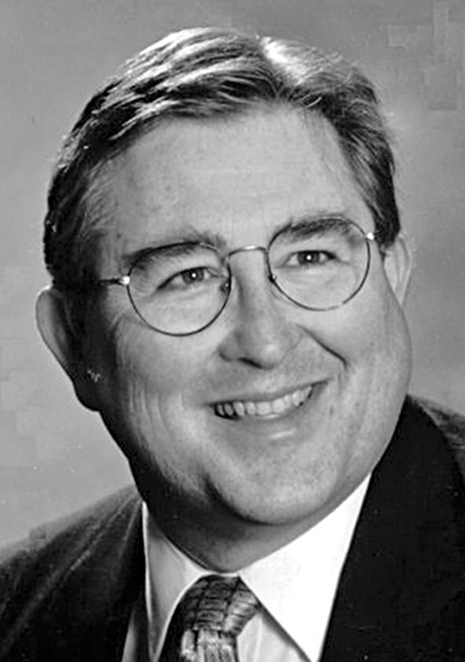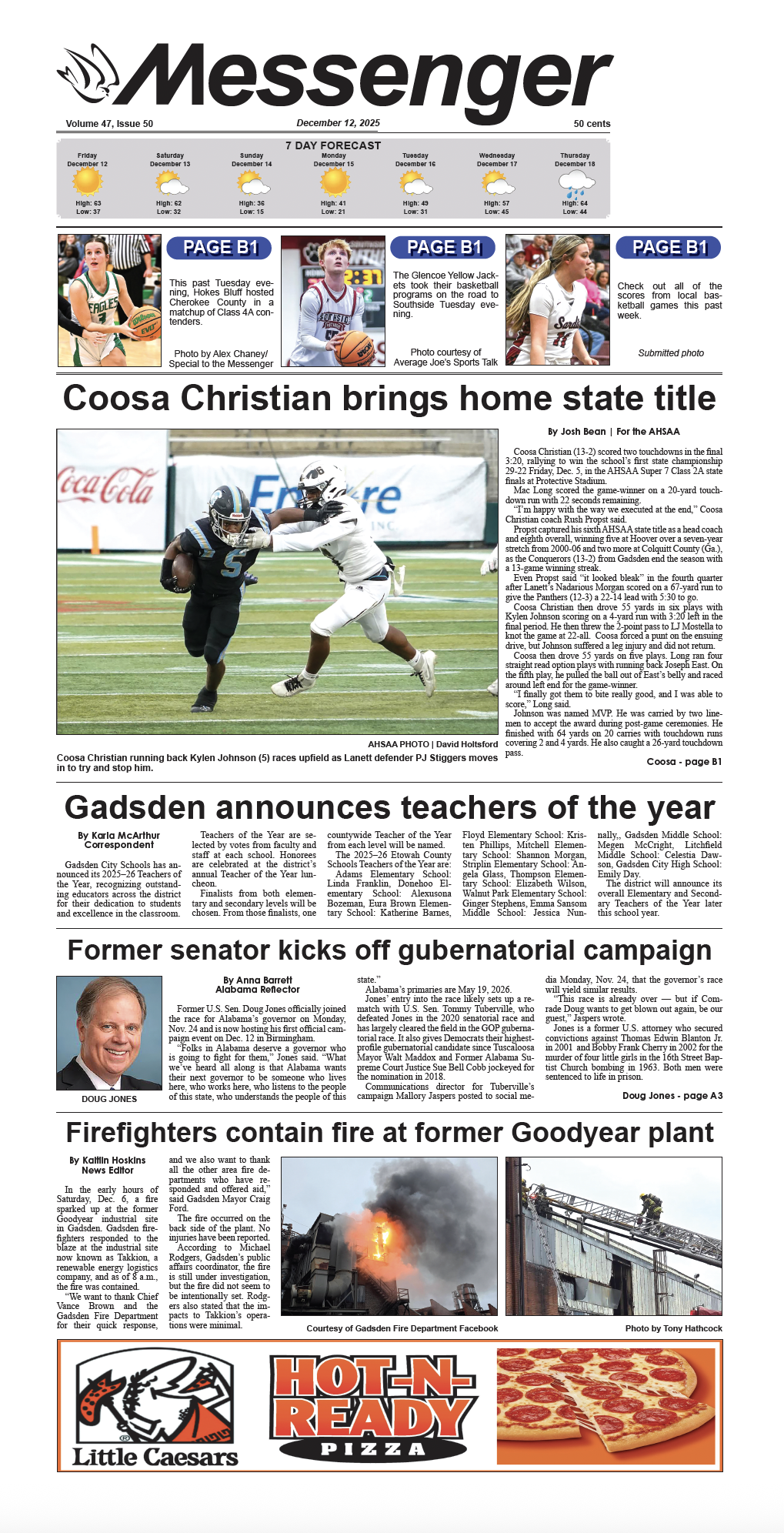By Danny Crownover
The drive to “Get Alabama out of the mud” was an interesting one from the start. The Alabama Good Roads Association sponsored many drives.
The newspapers led this movement, and their aid was invaluable. The old Birmingham Ledger organized and supported the “good roads scouts,” which was made up of leading men of that city.
The scouts traveled all over this part of the state and did much fine groundwork. They came to Gadsden and were welcomed and entertained in a fine and friendly manner. Mayor W.G. Bellenger formed an entertainment committee composed of local leaders. The visitors were tendered a banquet at the Hotel Printup.
Among the visitors on that occasion in Gadsden were U.S. Senator John Bankhead, who was known by many as the father of the Good Roads movement. He also was the father of U.S. Senator John Bankhead, Jr., and U.S. Congressman William Bankhead. The famous Bankhead Highway was named in honor of the senior senator.
Others attending the event were Lt. Gov. Walter D. Steed, Alabama Good Roads Association President and State Highway Commission member John Craft and Birmingham Ledger publisher James J. Smith.
Back in 1947, shortly after James E. “Big Jim” Folsom became governor, he toured the state with state highway department director Ward McFarland and the legislative highway committee in order to receive firsthand information about the needs of highway and bridge construction in various counties.
When Folsom and Co. arrived in Gadsden, they were met by Lt. Gov. James C. Inzer, house speaker William Beck and Etowah County state representatives James Allen, E.L. Roberts and Edward B. Miller, City of Gadsden Mayor J.H. Meighan and associate county commissioners Morris Ford and Robert McElroy.
Meighan, who acted as spokesman for the city officials, made the first official plea for a new bridge across the Coosa River, declaring that Gadsden offered one of the best examples of what improved trafficways can do toward building a community.
In launching the campaign for a new bridge – something that had been talked about for several years – the mayor said that 20 years ago the only crossing on the river was on the L&N Railroad bridge. At that time, there were a few small stores on the east side of the river and a comparatively small number of homes. The population of East Gadsden was estimated at around 300.
Meighan said that the state built the Broad Street Memorial Bridge in 1927 at a cost of $393,640.30. Two years later, the Goodyear Tire & Rubber Company located its Dixie plant in East Gadsden. That section of the city started building business houses, a bank, a branch post office, schools, churches, small manufacturing plants, the Alabama School of Trades, Starnes Park and Campbell Court with 250 dwelling units, the Gadsden Ordnance Shell Plant, Burns Park with 320 dwelling units, the U.S. Army Air Forces Depot, hundreds of new homes in Brookwood. Goodyear started out with 750 employees and had 3,500 by 1947.
The Alabama Power Company had announced the building of a $14,000,000 steam power plant in East Gadsden.
The mayor and his associates had reason to believe that within three or four years, a large industry would take over the shell plant and provide an additional payroll of five million dollars a year. He was speaking of the Allis-Chalmers plant. Meighan said that Gadsden had experienced a phenomenal growth, and that the greatest part of it was on the east side of the city and all of it largely the result of building the Coosa River bridge in 1927.
Through the location of the Goodyear plant alone, the state’s investment of $399,640.30 had been returned to the state treasury many times. The plant’s expansion had reached the point, Meighan said, where the one bridge across Coosa River was not adequate to take care of the traffic.
In March of 1946, state engineers made a traffic survey in Gadsden. It showed that in 24-hour period, 14,884 vehicles crossed on the river bridge, including 374 regularly scheduled buses.
The mayor said that a year after that survey was made, the traffic was much heavier and that there were times when traffic jams were of a serious nature. He pointed out that Gadsden’s population was 24,042 in 1930 and 36,975 in 1940. In 1946, a special census showed a population of 51,340, with 11,107 of that number residing in East Gadsden.
Meighan concluded the meeting with this statement: “I hope that the state will see fit to invest in another bridge in Gadsden, which will not only take care of our present traffic needs but also make possible further returns to our state treasury through revenues and additional employment to our people.”
As a result, the Meighan Boulevard Bridge was soon built. Since then, the I-759 bridge was built, and there is a demand that the Mei-ghan Bridge be six-laned.





